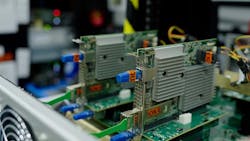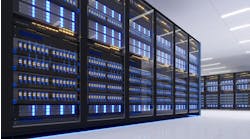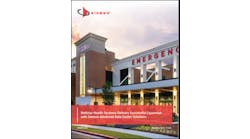Circular Servers: An Inside Look at How AWS Refurbishes its Data Center Hardware
The world's largest cloud computing platforms are focused on performance and sustainability. One way to advance both goals is to reuse parts from servers and storage gear that are being retired, extending the lifespan of IT equipment.
All the major cloud platforms have programs to create a "circular economy" for their data center hardware. As they retire and decommission equipment, these operations work to harvest components that can be used again, as well as parts that can be recycled. It's a process that can have a big impact on a company's bottom line and impact on the environment.
Amazon Web Services this week is providing an inside look at its process for "demanufacturing" the equipment it uses in its data centers. The company also said it is expanding its work with the Ellen MacArthur Foundation, which champions circular economy programs to tackle climate change.
AWS has facilities around the world to manage its hardware refurbishing process, which it calls reverse logistics. Each reverse logistics hub consists of an information technology (IT) asset disposition center that receives server racks and individual components from data centers and a failure analysis lab (FA lab) that tests and repairs used components.
"To extend the useful life of data center hardware, AWS sends all functional, sanitized, retired server racks and components to its reverse logistics hubs," the company said in a blog post. "There, server racks are securely demanufactured and components are repaired and tested for reuse in our data centers. ... This allows AWS to keep resources at their highest value for as long as possible, avoiding waste generation from our global operations and reducing the use of raw materials and carbon emissions across our supply chain."
Here's a short video providing a look inside the process, along with some of the hardware AWS reuses:
Here's a summary of the step-by-step process outlined by AWS.
- Decommissioned server racks are sanitized of customer data. All data-storing media is sanitized to ensure customer data is securely removed. Server racks are then decommissioned and tested for functionality.
- Reverse logistics hubs take in decommissioned server racks and hardware components.
- Server racks are carefully demanufactured into individual components. Server racks are taken apart, and AWS technicians evaluate components for reuse, including AWS Nitro Cards, power supply units (PSUs), graphics processing units (GPUs), switches, dual in-line memory modules (DIMMs), and fiber optics.
- Individual components are sent to the FA lab for repairs and testing. The Failure Analysis (FA) lab is the nucleus of an AWS reverse logistics hub. Technicians inspect components for physical damage. “The technicians look for any defects that would prevent a component’s reuse in a data center."explains Julie Scudder, manager of the AWS FA lab in North America. After inspection, the technicians make minor repairs when needed and clean components before sending them for testing.
- Failure analysis testing ensures component functionality. Several server racks run throughout the day as technicians evaluate different aspects of performance. Other tests simulate data center operational stresses or use software scripts to determine the functionality of components.
- Nitro Cards are put in testing rigs that simulate the environment of a data center server. AWS Nitro Cards, networking hardware made by Amazon’s Annapurna Labs, are run through a series of software scripts to ensure the card will perform with the same high-quality standards as a newly manufactured card.
- Test results are sent to AWS's hardware engineering teams where they can be analyzed and used to improve future designs.
- Functional components are returned to inventory for reuse in an AWS data center.
As a final step, functional components are processed and shipped back to data centers. “We have a lot of pride in the work that we do knowing there's still a lot of useful life in the products that we touch,” said Anderson. “The components we repair are small, but they have the potential to make a big impact for our company, our customers, and our planet.
Elsewhere in the Cloud ...
Similar programs are in place at the other large cloud providers.
Google has been working with the Ellen MacArthur Foundation for years on circular economy initiatives for its data centers. In 2021, 27% of the components used for server upgrades were refurbished inventory, and the company's global landfill diversion rate for data centers was 78%. "We’re committed to achieving Zero Waste to Landfill for our global data center operations by reducing the amount of waste we generate and finding better disposal options," the company said.
Microsoft has introduced Circular Centers for on-site decommissioning on the campuses of its data centers in Amsterdam and Singapore. The company says the campuses with Circular Centers achieved 83 percent reuse and 17 percent recycling of critical parts, while contributing to the reduction of carbon emissions by 145,000 metric tons CO2 equivalent.







